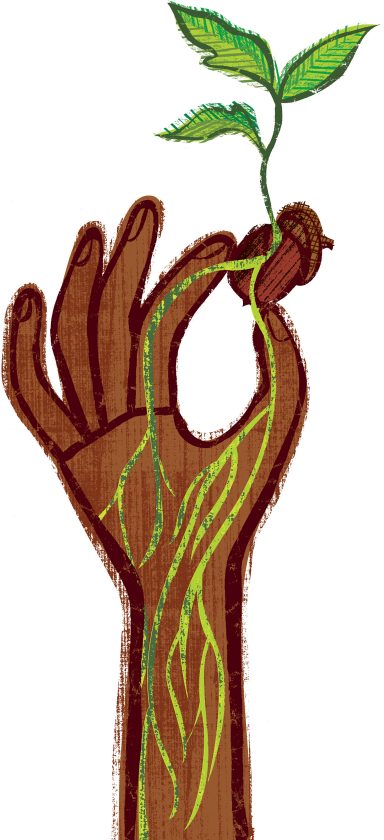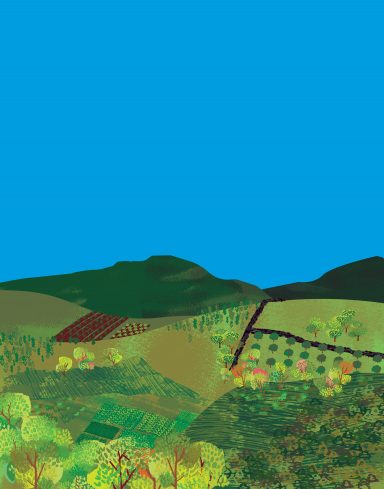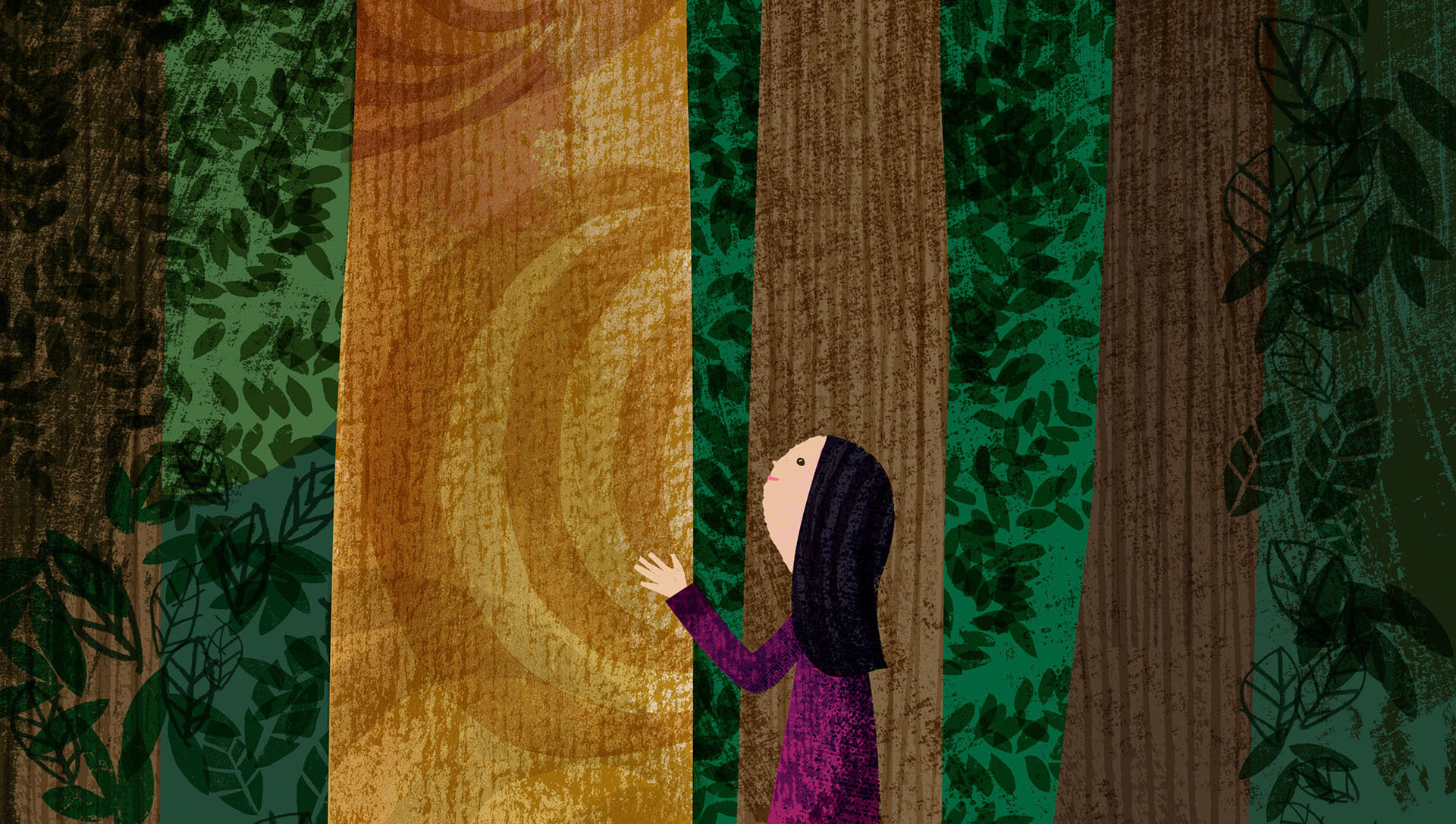In a globalized world full of nation-states, the use of natural resources is drastically varied. Forests provide lumber for buildings hundreds or even thousands of miles away. Many cease to exist. Power structures ostensibly representing millions of people govern the use of the planet’s resources.
Who, then, is responsible for saving the trees? It takes a village — but a bigger one this time, with people from all walks of life. Among these people are academics of multiple disciplines, NGO workers, and community organizers. At the University of Florida, a village meeting center has emerged as faculty from a half dozen disciplines cross the garden walls to meet in the forest — both metaphorically and literally.
Twenty-seven professors in the College of Liberal Arts and Sciences serve as affiliate faculty of UF’s Tropical Conservation and Development (TCD) program. TCD emerged in the 1970s and gained momentum over the next couple of decades, with significant leadership by UF professor Marianne Schmink, who served as its co-director from 1993 to 1995 and director from 1996 to 2010. The program offers an interdisciplinary hub that extends its roots beyond the UF sphere; this broad network becomes increasingly crucial to solving the challenging problems of deforestation, damming, and loss of culture and biodiversity — much of which occurs between 23 degrees north and 23 degrees south.
“My perception is that the wicked problems of the world, the ones that have no easy solution, ultimately lead us to do this kind of thing,” says Stephen Perz, professor of sociology and author of Crossing Boundaries for Collaboration: Conservation and Development Projects in the Amazon (opens in new tab). “The challenges of working with the ‘other’ — people in other disciplines, other countries, other kinds of organizations — I ended up learning by doing.” Trained as a demographer, Perz’ research into frontier migration ultimately led him from sociological inquiry into land use, road-building and conservation in the Amazon.

These topics revolve around the worsening problem of drastic deforestation, and the human element cannot be ignored, nor confined to state-level interventions. Indeed, a familiarity with the people within the forest is crucial to this kind of work, especially as conservation scientists work towards community-oriented natural resource management. Local institutions and power dynamics of land ownership and use must be considered. Schmink, professor of Latin American Studies and affiliate professor of anthropology, studies gender politics in conservation.
“Development and conservation tend to be viewed as political and ideological issues. Often people in technical fields don’t understand how gender division of labor and different forms of knowledge and other key gender differences might affect what to them don’t seem to be related,” she says. “After 40 years in this field, I usually have to start from zero in explaining to people how gender impacts the field.” For example, many land-use decisions are made by women in forest communities around the world, so imposing state hegemony of male-oriented nations is harmful.
Even entering these vulnerable areas as a researcher has its challenges, agrees Perz. “When you’re crossing boundaries, usually those boundaries are there for [societal] reasons and then they map on inequalities. When the white male PhD from a big North American university comes down into a small country where they don’t have as many PhDs and the people speak a different language and the skin colors are different, that has to be navigated because it can come up in various different ways and can cause all kinds of misunderstandings and confusion,” he says.
On the other side of the world in Indonesia, biology professor Jack Putz studies logging and natural resource management by examining the trees themselves. His education in applied plant ecology kicks into gear when working in an area with forests that will inevitably be logged. Who better than such an expert to protect the forest despite the loss of its trees? “Outside of protected areas in landscapes from which people need to earn livings, I often find myself doing conservation with chainsaws, bulldozers, herbicides, and drip torches,” he says. Saving the trees is a family thing, he says, starting with a threatened patch of trees behind his house. “To my great embarrassment, [my mother] chained herself to a tree and dared the dozer drivers to plow her under. They didn’t and the trees stand, testimony to her determination.”

The family tradition continues as Putz and Claudia Romero, his research partner and wife, each tackle deforestation and forest degradation. Assistant Professor of Biology Romero focuses on mitigating the effects of climate change, bringing her dual perspectives in ecology and economics to the table. The pair’s most recent paper (opens in new tab) for the Center for International Forestry Research reviews the efficacy of methods such as Reduced-Impact Logging (RIL) and silvicultural (tree care) treatment and addresses the climate change effects of such methods. Written with their former student Ruslandi PhD’15, the paper explores the timber, carbon, and financial tradeoffs that result from RIL and other tree-growth enhancing treatments in Indonesia. Moreover, there is the question of economic effects, exemplified by the misunderstanding of RIL to mean “reduced-income logging.” Conservation science often walks a web of fine lines among saving the trees, reducing the greenhouse effect, supporting local economies, and protecting biodiversity, any of which can come at the expense of another.
While Putz works outside government-sanctioned “Protected Areas,” historically, such zones have had the unfortunate side effect of asserting state control with little parity with the locals. In light of this, many conservation efforts seek to integrate silvicultural and culturally competent measures. The International Union for the Conservation of Nature thus identifies and encourages the creation of Indigenous and Community Conserved Areas (ICCAs). Many ICCAs are so because of a web of customs, traditions, and principles that encourage conservation. In Brazil, indigenous reserves comprise a significant portion of the country’s 145 million hectares of Amazonia.
Understanding humans, no matter their type of society or culture, as geomorphic agents better allows for tree-saving.
The new approach to conservation remembers the forest’s people, yet sheds the myth of the “noble savage” living in perfect harmony with nature. Understanding humans, no matter their type of society or culture, as geomorphic agents better allows for tree-saving. “Beginning in 1988 or ’89, we had two training courses in Brazil that were focused on an approach developed by Peter Hildebrand, UF professor emeritus, that offered solutions for small farmers and forest managers,” says Schmink. The program, PESACRE, brought professionals into collaboration with small agricultural producers in Brazil. Supported by a major USAID grant for 13 years, PESACRE addressed economic vitality and natural-resource conservation as two sides of the same coin.

Perz seeks to connect all these dots with intricacy to match that of the forest ecosystem. It starts with a decision, such as to build a road. “What happens when you pave a road in the Amazon? Socially, economically and ecologically? As it turns out, there is a large literature on all those topics, and they draw very different conclusions as to whether the roads are a good or a bad thing.” In the end, conservation does not necessarily equate to preservation.
For these researchers, the seeds of conservation science started with the trees. “In graduate school in the 1970s — the beginnings of the women’s movement — I was able to do some traveling as an undergraduate in Nicaragua and Mexico,” recalls Schmink. “It got me interested in Latin America, in human–nature interactions and how people adapt to their environment.”
“I grew up on the edge of an extensive wilderness area, at least extensive from the perspective of a little kid growing up in suburban New Jersey,” says Putz. “Plenty of trees to climb, underground forts to dig, squirrels to harass, and a lot of the same things I continue to do as an adult, but now I get paid for it.”
